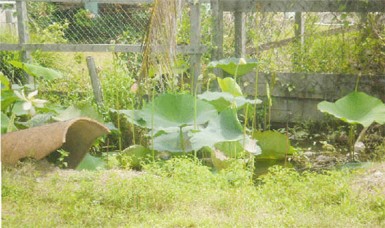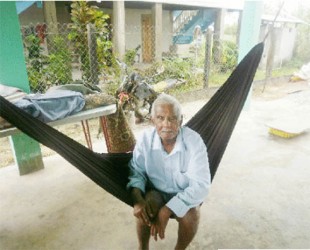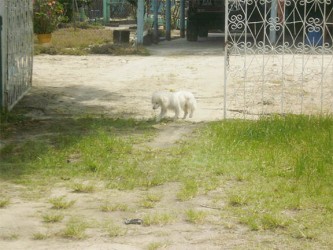Story and photos by Kenesha Fraser
Hampton Court, a predominantly East Indian village located between Devonshire Castle and Windsor Castle, is well-populated but most of the people who live there, Sunday Stabroek was told, “don’t like publicity.” The reticence of the villagers provided some reinforcement for this caution, however, Mr Ishack Basir, a stalwart who lives in the village readily provided information.
“In the early years, the Hampton Court estate was owned by a man named Brassington. Between 1925 to 1934, there were four main operating estates on the Essequibo Coast, the four being Golden Fleece, Affiance, Anna Regina and Hampton Court, which was the largest. This village had its own school, market and hospital and [was] as it still is today, a successful rice farming community.”
Mr Basir said that on the estate, there were eight logies in which the East Indians who worked as labourers lived, but after Brassington lost the local elections, he chased the Indians from the land, blasted the chimney, blocked the waterways and damaged a special pump. After doing all this damage, he migrated. According to Mr Basir, the people were rescued between 1938 and 1940 when another man, Mohammed McDoom, bought the Hampton Court estate and occupied a house there. He sublet the remaining land to the Indians who were squatting there at the time.

engine which he has removed from his boat for
safety’s sake. (Photo by Arian Browne)
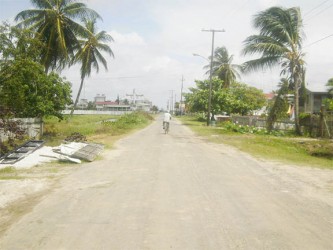
“Up until 1961, there was no precise development,” Mr Basir said. And then it happened. A “rice scientist” moved to Essequibo and made his home in Hampton Court. Kayman Sankar organised the old rice mill and became an icon of the rice industry. “Mr Sankar built a community playground and the first mordern airstrip. He allocated land to residents who wanted to purchase it and he gave them transports. During the period of his business, he was also one of the main exporters of rice to other countries and he also gave his workers scholarships and holiday vacations overseas.”
Mr Basir, a former resident of Jacklow Pomeroon said he moved to Hampton Court in 1974. “I sold my property in the Pomeroon and bought this place here. When I moved here it was not populated and had just about 60 families. The place was bushy and the land had to be cleared.” When asked about access to potable water and electricity, he said that persons stored water in barrels from a well which was in Danielstown. “People had to go to Danielstown with their barrels on carts to get water. We got light from home-made oil lamps.”
Now, after he left his profession as a dentist years ago, Mr Basir is a voluntary social worker, writes articles for newspapers, and is a part-time lecturer. In his spare time, he enjoys gardening and he has a blossoming kitchen garden.
The village of Hampton Court now has an approximately 2500 people, access to potable water, electricity, and a telephone service. There is also a privately owned community playground which is open to the use of community members.
Residents voiced their concerns about a non-functioning koker which needs urgent attention. “If you see the playground now, it is under water because we had a little rain lately, but it was never like that before. The playground was looked after but the koker not drawing out the water when rain fall so this is how the place left. Somebody should do something about it,” one resident said.

Along the public road, in a concrete house, Hindarry Deendial was sitting in a hammock reading the latest edition of a daily newspaper. “Well for 72 years I living in Hampton Court and I like it here. I used to live over that side,” she said pointing, “but then I marry and come over here. Growing up here was so nice for me and I could remember that me and meh brothers and sisters use to enjoy we self. This was always a quiet and peaceful village and as neighbours we does live like family.”
Eighty-two year-old Basdeo Ramkisson shared the same view about the village as he too sat in his hammock a few houses away. “Me born and grow up here and it was nice fuh me. How me like this place suh bad I even marry a girl right from here
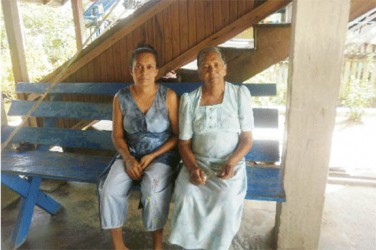
but she dead now.” He added, “Me use to work as a rice farmer but meh don’t work now because meh foot does give me lil trouble so now me does just relax,” the man said smiling. According to residents, most of the persons living in the village are rice farmers while others are self employed or work in offices outside the village.
Businessman Karim Bacchus said that for the past 40 years, he has been living in Hampton Court and even though business is tough, life in the village has been great. “This is a rice-producing area and now the issue is that the rice farmers are not being paid so that means that people don’t get the money so they don’t come to buy.” Bacchus added that his father had once owned the shop he is now operating but he not only sells but also keeps a kitchen garden. “I would like the relevant authorities to look after the koker because any little rain cause flooding here and my crops get damage.”
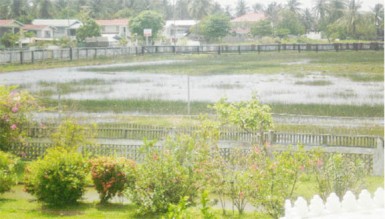
Down Kayman Dam the Kayman Sankar and Co Ltd Rice Farmers Millers & Exporters complex still stands, besides which is the airstrip. The Kayman Sankar Aquaculture Farm is a thriving one and a staff member said that every day tilapia and hassar are sold mostly on a large scale basis, while cattle are also reared by the management there.
Residents dispose of their garbage by burning and some put the waste into barrels in front of their homes which are emptied by Puran Brothers Inc. The village of Hampton Court was described as “peaceful and quiet” by residents, whose spiritual needs are served by a mandir and a mosque.

